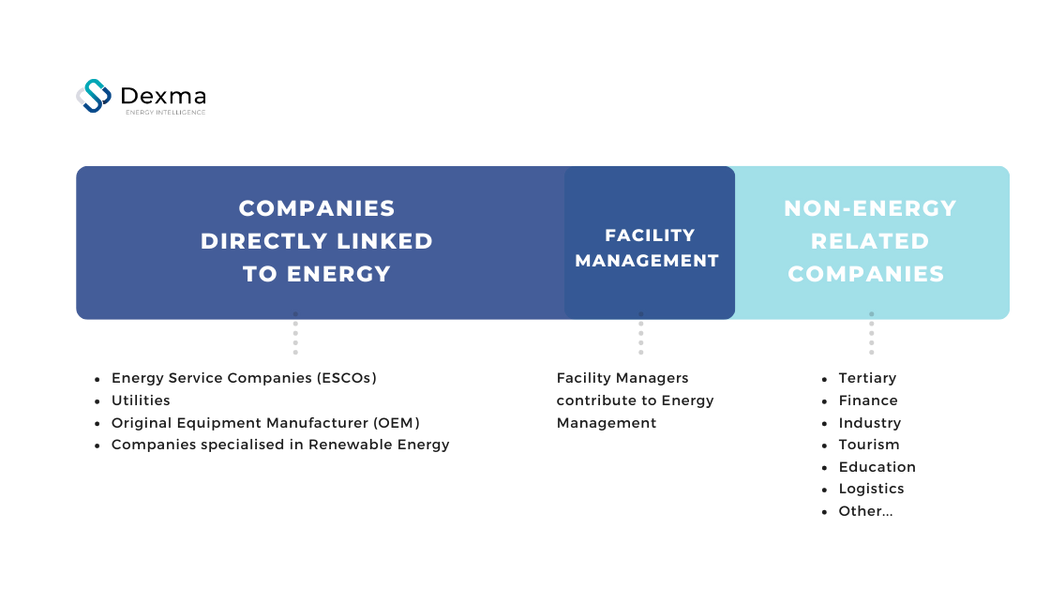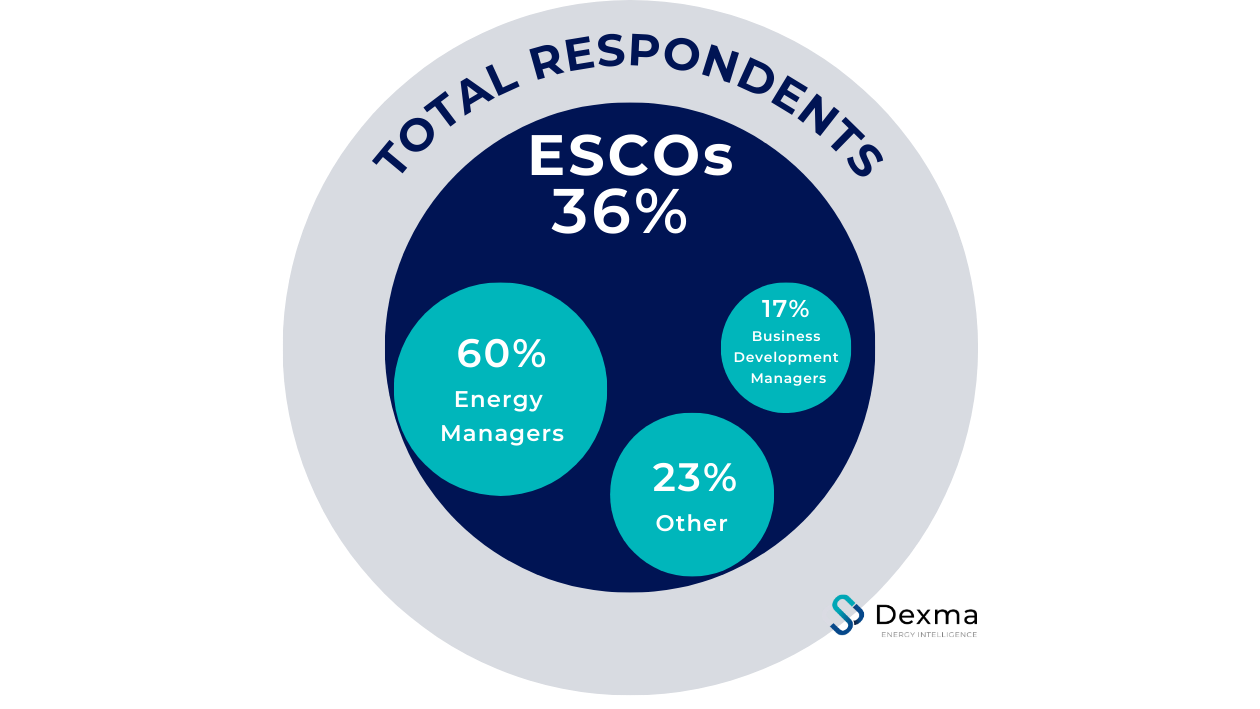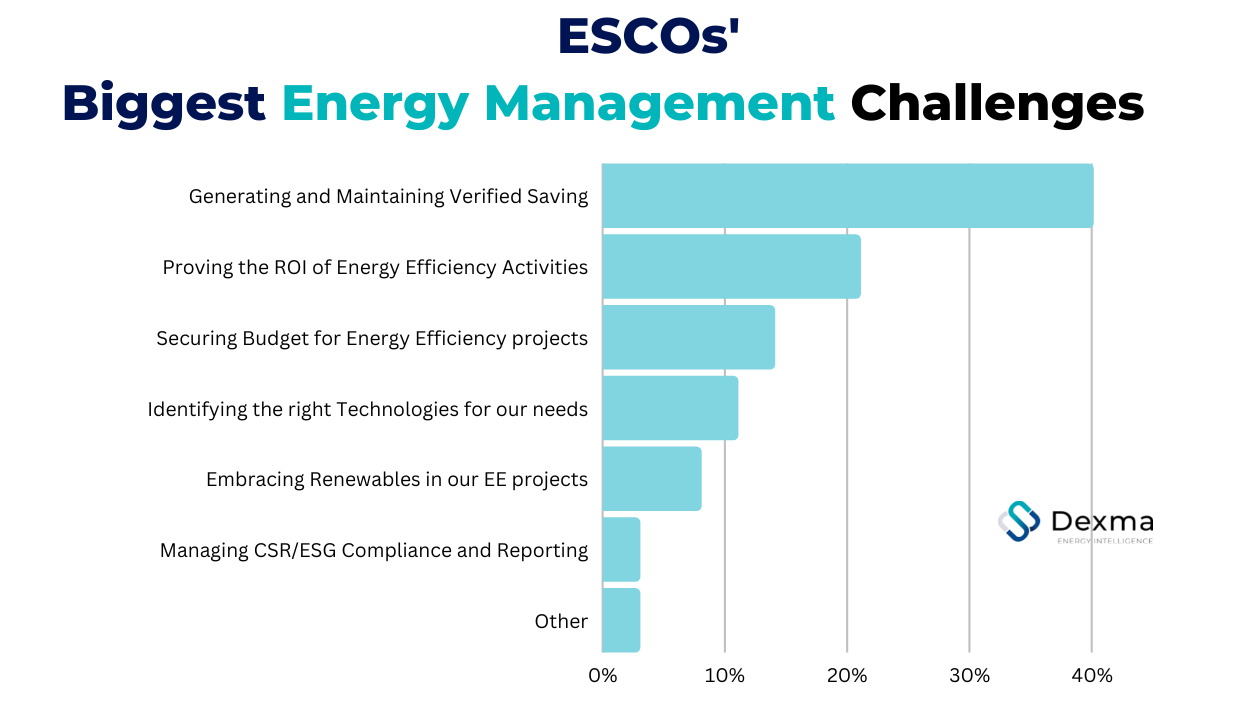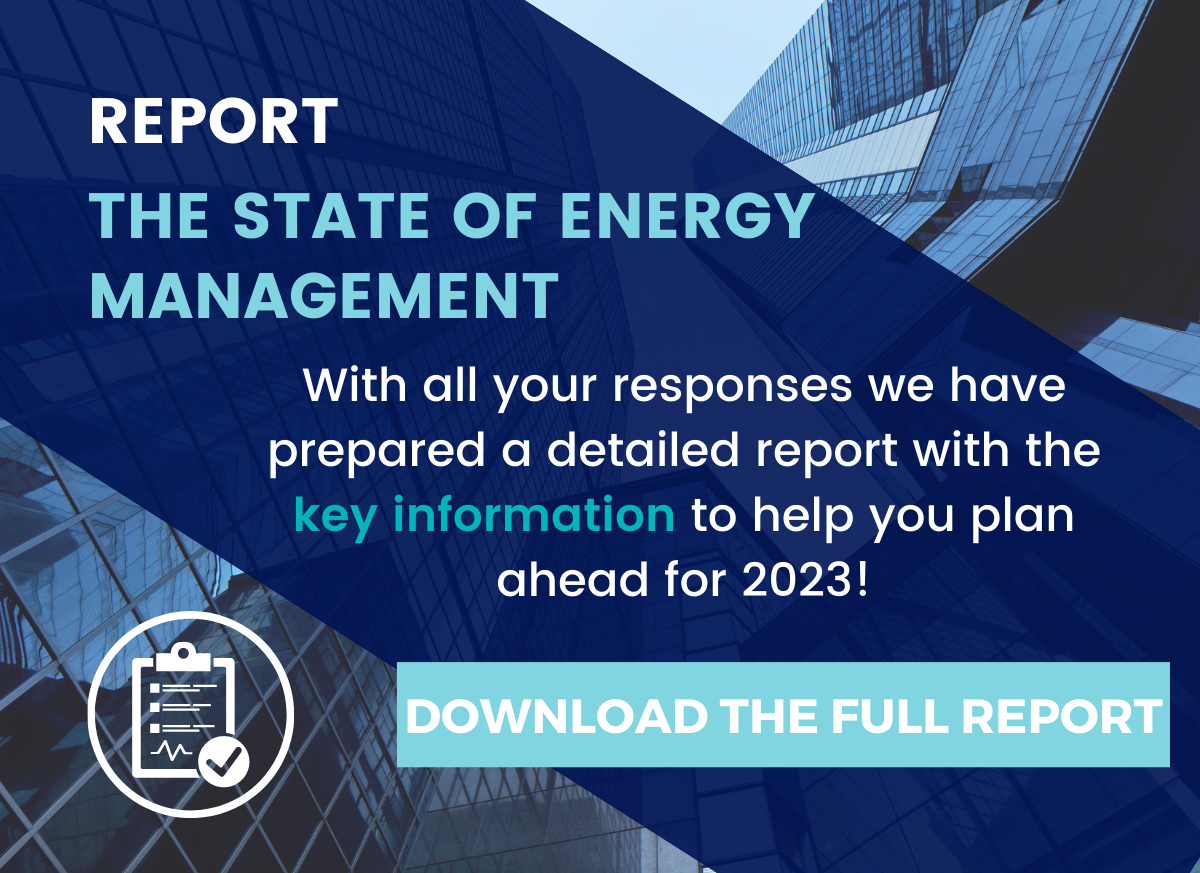If you follow us on social media or are an avid reader of our blog, you will have noticed that the results of our survey “The State of Energy Management 2022” have been released and that you can now download our report for free.
As in previous editions, this year we also focused on Energy Service Companies (ESCOs), the challenges they faced in 2022, their priorities for 2023 and the trends they believe will shape the energy landscape in the upcoming years.
In this article, we will have a closer look at the results.
The energy crisis has pushed ESCOs to shift their models to remain competitive. More than ever, in a sector constantly evolving, with volatile prices and digitisation processes, challenges and opportunities are arising rapidly. Therefore, the future of the energy efficiency sector will be largely determined by the role that ESCOs’ business models will have in the market. In this sense, the British Government set a goal of reducing carbon emissions to net zero by 2050 and ESCOs play an important role in meeting this target through conservation and energy efficiency.
The State of Energy Management Survey: Respondents’ profiles
Of the 250+ participants, the State of Energy Management survey revealed that almost 60% worked in companies directly related to energy, including Energy Service Companies (ESCOs), utilities, equipment manufacturers and renewable energy companies. And more precisely, a bit more than a third (36%) of respondents were Energy Service Companies. ESCOs are one of the key players in the overall effort to reach energy efficiency goals and a more sustainable approach to energy consumption.
The majority (60%) of ESCOs who took part in the survey stated they would describe their professional role as Energy Manager, or Business Development Manager (17%).
ESCOs’ top Energy Management Challenges
With an increasing global emphasis on cutting carbon emissions and transitioning to clean energy sources, ESCOs are shifting their business models to meet the changing demands of their customers. So what are the two main challenges the ESCOs survey faced in 2022?
1. Generating and Maintaining Verified Savings (40%)
Unsurprisingly, generating and sustaining verified savings was recognised by the majority of ESCOs to be their main challenge faced in 2022. Last year it was already ranked at the top of their list.
Through ongoing monitoring and maintenance of implemented measures, and keeping abreast of industry standards and best practices in energy efficiency, ESCOs will achieve energy savings. In addition, companies must also undergo periodic audits to ensure that energy savings continue to be obtained.
It is true that analysing existing projects, verifying and forecasting savings for a project at the planning stage can be an arduous task if you don’t have the right technology in place. It is for this reason that the most sophisticated ESCOs have already implemented and recognised the value of an Energy Management System (EMS). In this sense, our survey shows that almost half (48%) of respondents already use an EMS to ease and streamline their processes.
Measurement & Verification (M&V) processes are used to measure and verify, in a regulated way, the energy savings resulting from planned and defined changes to all or parts of the energy infrastructure of a specific facility or group of facilities.
For any energy savings project, you may want to implement, Energy Performance Contracts (EPC) will need to define the basis for the calculation and distribution of savings obtained for both the ESCO and the customer.
Our Dexma Measure and Verification tool could be beneficial for your company as it will enable you to:
- Increase the Evaluation Frequency of your Project
- Visualise Savings vs.Targets
- Evaluate multi-location contracts
These actions to measure and verify savings during your energy efficiency project are advanced actions which will help speed up decision-making and readjustment during the project. If you want more information, please read our article titled “How to increase your EPC Margins using Dexma Measurement and Verification Tool”.
2. Proving the ROI of Energy Efficiency activities (21%)
The Return on Investment (ROI) metric is used as part of the analysis and serves as a benchmark for developing future strategies. Calculating the ROI of an energy efficiency project is key, as it will show the viability of the project to their clients. In this context, the ROI can be demonstrated by computing the energy savings and the cost of implementing energy efficiency measures. It is then determined by dividing the savings by the cost of implementation while adding other factors (such as lowered GHGs reduction, and improved comfort, among others). For 21% of the ESCOs surveyed, demonstrating the ROI of their energy efficiency actions seems quite difficult.
As an ESCO you can offer much more value through additional services and solutions, including industry knowledge and experience, technical expertise, performance and savings guarantees, fixed project costs and proposals, as well as the ability to achieve superior savings and ROI, to cite a few examples.
Energy-efficient products or services can first appear to be more expensive than conventional ones to your clients, which unfortunately will often discourage many. However, the energy savings from energy efficiency measures should eventually outweigh the extra cost, providing an implicit return on investment compared to the cost of switching to more conventional products. Proving to your clients their potential ROI and savings potential is critical.
But we understand that it can be challenging, especially if you don’t have the right tool to do so, as proving the ROI of your energy efficiency activities requires accurate data collection and analysis. To ease your life, we suggest you use our Free Energy Efficiency ROI Calculator in the form of an Excel Template.
If you are not sure how implementing an EMS will help you prove the ROI of your energy efficiency activities in the last part of this article, you will find out how to calculate the ROI of an EMS.
How can my ESCO stand out?
There are many ways in which your Energy Services Company can stand out in a competitive market, including offering a wide range of services, specialising in a specific niche, implementing new technologies, demonstrating proven results and achieving certification, to name but a few. “Indoor air quality and comfort projects” and “Carbon reporting“ were highlighted by the ESCOs surveyed.
Indoor Air Quality (IAQ) and Comfort Projects
Indoor air quality (IAQ) and comfort projects are aimed at improving the air quality and comfort of indoor spaces.
By monitoring humidity, temperature and CO2 levels, among other variables, information can be extracted to help improve the comfort and well-being of building users. For instance, installing carbon dioxide level sensors will tell you how many particles per million (ppm) there are, at any given moment. The Dexma Indoor Air quality feature will allow you to monitor air quality indicators.
Testing the indoor air quality of the office or working environment is an essential element, as it is also a way of showing employees that their health and well-being are important. A point supported by our survey: to the question “Do you already offer and implement indoor air quality and comfort projects to your customers” 25% responded affirmatively whereas a majority (41%) of respondents said, “not yet, but it’s in our plans for the future”.
In this article, you can discover how you can help your clients improve the air quality in their work environment.
Carbon Emissions Reporting (Carbon Footprint)
Even though some of your clients might want to monitor their emissions to demonstrate a commitment to operating sustainably, carbon emission reporting may also be a legal requirement for some of your clients. In the UK, the Streamlined Energy and Carbon Reporting (SECR) policy requires quoted/unquoted large organisations, among others to share energy use and carbon emissions information in their annual reports. The information contained in carbon emissions reports can be useful in guiding decision-making and identifying opportunities to reduce emissions.
To the question “Do you offer services to your customers to calculate their carbon emissions and reporting”? 42% of ESCOs stated they are already offering this type of service to their clients, while 35% replied that even though they currently don’t, they plan to do so in the near future. This proves that the transition to greener energy management is on its way.
However, we can’t stress this enough: it’s all about having the right tools and staying on top of technology to keep your customers satisfied (particularly at this time of year) and help them save energy and thus, money. If you are not sure where to start, in this article we list the 10 must-have Energy Management tools that will help you do so.
We hope you have found this overview useful and interesting. If you want to read the full report with more details, including energy professionals’ priorities, upcoming energy management trends and more, you can download it for free by clicking here.







